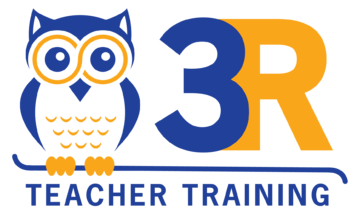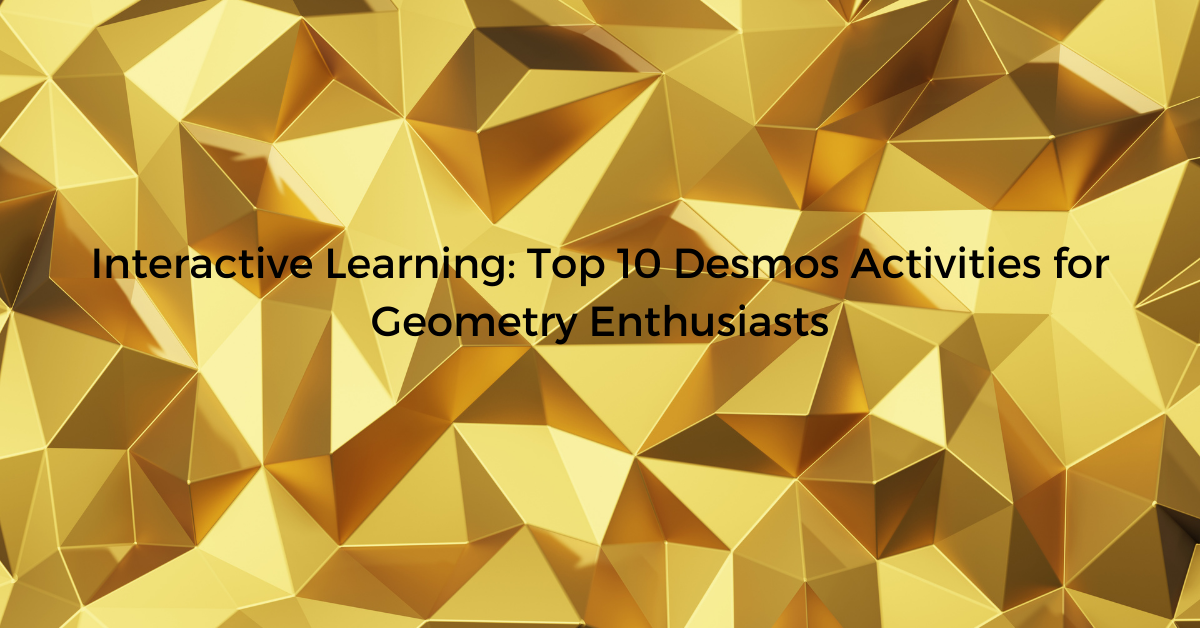As a Site Facilitator, I have the privilege of visiting and evaluating classrooms in the Northeast. This particular day, I entered a Geometry classroom and observed a lesson using Desmos. For those of you who have not heard of Desmos, it has emerged as a beacon of interactive learning, particularly in the realm of mathematics. So I was excited to be a part of this lesson. Geometry, with its intricate concepts and visual nature, can sometimes pose challenges for both educators and students. However, tools like Desmos transform these challenges into opportunities for deeper understanding and engagement. As an educational consultant, I've witnessed firsthand the transformative power of interactive tools in enhancing comprehension and fostering a love for learning.
The beauty of Desmos lies in its ability to make abstract geometric concepts tangible. Here are some of its standout benefits:
- Visualization of Complex Geometric Concepts: Traditional methods often rely on static images or drawings. Desmos, on the other hand, offers dynamic visualizations, allowing students to manipulate figures and instantly see the results.
- Real-time Feedback and Adjustments: Mistakes are a natural part of learning. Desmos provides immediate feedback, enabling students to correct and learn from their errors in real-time.
- Collaboration and Sharing Capabilities: I've always emphasized the importance of collaborative learning in my consultations. Desmos promotes this by allowing students to share their work and learn from one another.
So, let’s get to the good stuff! Here are the Top 10 Desmos Activities for Geometry;
Triangle Congruence
1. Explore the conditions under which triangles are congruent.
Key Learning Outcomes: Understand SSS, SAS, ASA, and AAS congruence postulates.
Exploring Circle Theorems
2. Dive into the properties and theorems associated with circles.
Key Learning Outcomes: Grasp concepts like tangent lines, arc lengths, and central angles.
Transformations and Symmetry
3. Visualize and practice various geometric transformations.
Key Learning Outcomes: Master translations, rotations, reflections, and dilations.
Properties of Quadrilaterals
4. Investigate the unique properties of different quadrilaterals.
Key Learning Outcomes: Differentiate between parallelograms, rectangles, rhombi, and squares.
Pythagorean Theorem Exploration
5. Delve into the relationship between the sides of a right triangle.
Key Learning Outcomes: Apply the Pythagorean theorem in various contexts.
Volume and Surface Area of 3D Shapes
6. Explore the dimensions of three-dimensional shapes.
Key Learning Outcomes: Calculate volume and surface area for prisms, cylinders, pyramids, and spheres.
Angle Relationships and Parallel Lines
7. Understand the relationships between angles formed by parallel lines and transversals.
Key Learning Outcomes: Identify alternate interior, corresponding, and vertical angles.
Trigonometric Ratios and the Unit Circle
8. Introduce trigonometry through the unit circle.
Key Learning Outcomes: Understand sine, cosine, and tangent ratios.
Constructing Geometric Shapes and Proofs
9. Engage in hands-on construction of geometric figures and their proofs.
Key Learning Outcomes: Develop logical reasoning and proof-writing skills.
Exploring the Properties of Tessellations
10. Discover the world of repeating patterns in geometry.
Key Learning Outcomes: Recognize and create various tessellations.
From my experience as an educational consultant, the tool is only as effective as its application. There are some insights to maximize Desmos' potential. First, encourage student collaboration and promote group activities. I've observed that students often gain more profound insights when they discuss and tackle problems together. Secondly, integrate with other learning resources. While Desmos is powerful, it's even more effective when combined with other resources like textbooks, worksheets, and real-world applications. Lastly, continuously assess and adjust. Regularly gather feedback from students. Their insights can guide adjustments to make lessons even more effective.
The world of education is constantly evolving, and tools like Desmos are at the forefront of this transformation. We educators aim to equip students with the best resources and methods. Embracing interactive learning platforms is not just a trend; it's a step towards a more engaged and enlightened future for our students. For those eager to dive deeper, I recommend exploring the official Desmos website for a plethora of activities and tutorials. Additionally, journals on modern pedagogical methods can offer further insights into the benefits of interactive learning in the digital age.

